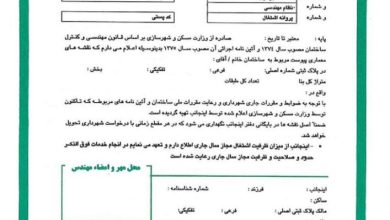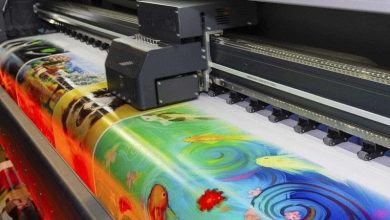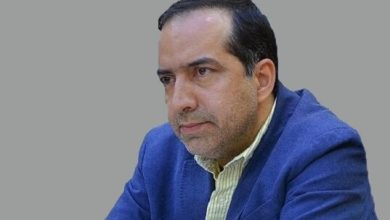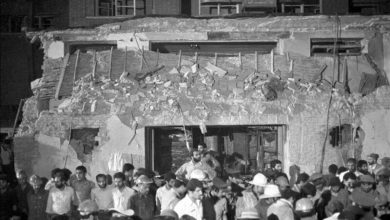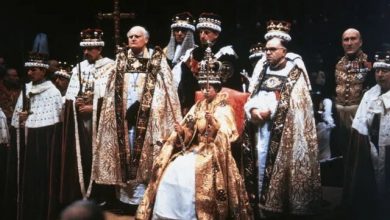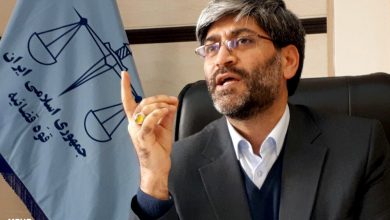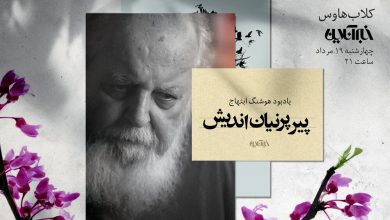The Shafia, a distinctive black and white Palestinian tapestry, has been described as the country’s unofficial flag for several years.
Instagram Plus: The simple meter square cloth, folded diagonally into a triangle and worn on the heads of the Palestinian village men, is synonymous with the Palestinian cause and still means the same thing, only now they are not the Palestinian village men. Today, human rights activists, anti-war protesters, sports stars, and celebrities regardless of gender, religion, or nationality use this dress as a symbol to declare their solidarity and belonging to the cause.
Older generations of Palestinians still wear this cloth on their heads, while younger generations wear it around their neck, using it as a handkerchief or scarf, and sometimes wrapping it around their wrists and hands.
Today, we identify the Shafia with Palestine, which is the main origin of this square tapestry in today’s Iraq.
The correct pronunciation of al-Shafia means “related to Kufa,” which refers to the Iraqi city of Baghdad south of the Euphrates River, however, not much is known about the origin of al-Shafia. One of the stories is that in the seventh century AH, during the battle between Arab and Iranian forces near Kufa, the Arabs tied their veils with ropes of camel hair and branded their comrades in the heat of battle. Having won this battle, he decided to keep the healer as a souvenir of his victory.
Sometimes called “hita” in the Syriac language, this garment has pre-Islamic origins, and others say that it was worn by Sumerian and Babylonian clerics in Mesopotamia about 5,000 years ago.
Anu Lingala, author of the Social and Political History of Shafia says, “We have only a series of speculations about the origins of Shafia. Until recently, material history was not taken seriously as a topic of academic research. If any studies are conducted in this field, they are limited to extracting material history used by the elite and wealthy, while the healer was traditionally associated with the working classes.
But in the modern history of Palestine, we know today that Shafia was popular among farmers, rural workers, and Bedouins, and the reason for its use was to protect the head and neck from the scorching sun and desert winds. More educated Palestinians wore the shehri or effendi, a dark red hat popularized by the Ottoman ruler Mahmud II and used by the local population as standard clothing.
In her book Fashion and Politics, cultural historian Jane Tainan says of the importance of the head covering: “The ritual covering of the Ottoman Empire had the effect of erasing ethnic and religious identities, but it was accepted by the urban population as the norm.”
After the loss of Near Eastern lands to the Ottoman Empire during World War I and the Arab revolt against British colonialism in 1936, Palestinian nationalists used Shaivism as a way to hide their identity and cover their faces to avoid detection. It just isn’t successful that way. As a result of this use, the British wanted to prevent the wearing of the Shafiya, and this was the moment when the Shafiya became official as a symbol of the solidarity of the Palestinian people. This symbol has been the main symbol of the Palestinian state since the day of the Nakba and the establishment of the State of Israel.
Maha Shakaa, head of the Palestinian Heritage Center in Bethlehem, says: “Palestinians of all social classes are leaving Fez and uniting with Ghatia. This cultural trend makes it difficult to identify the revolutionaries.”
Tynan, associate professor of design history and theory at Vrije Universität Amsterdam, said: “The chafia became an epitome of the Palestinian struggle because of its function in rebellion as a means of anonymity.
The significance of Shafia lies not only in its historical character and traditional representation, the conflict between Palestine and Israel is a dispute over the land and ownership of the country and because it occupies an important part of the land. Culture under exile and dispersion, the people of this land under threat, and al-Shafi a cultural symbol to keep Palestine alive for years to come. Perhaps one of the most influential political figures in the world in establishing this cultural symbol is Yasser Arafat, who did not appear at any party without a hat.
When the Israeli occupation authorities banned the Palestinian flag from 1967 until the Oslo Accords in 1993, University of Arkansas anthropology professor Ted Swedenborg said it was not the British ban that popularized the use of the chafia. The strength and the basic element of the Palestinian identity.
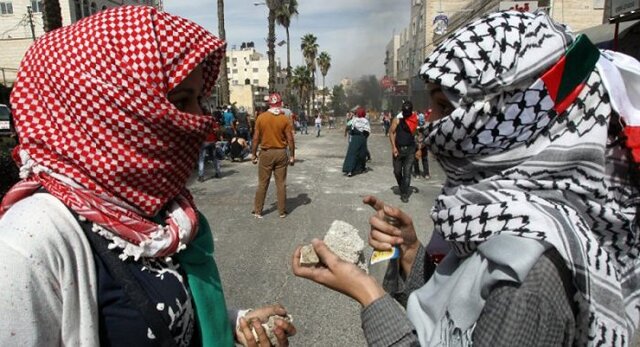
Swedenborg says that “portable and visual symbols” are important to Palestinians. While the occupation government has banned the Palestinian flag for nearly 30 years, Al-Shafi said, “There is a lot of symbolism and history associated with it as a flag.” Daily use and portable. Visual expression of the Palestinian identity
It is said that the distinctive black stitching on white cotton has many symbolic meanings, although none of these meanings have been confirmed, but the Palestinians did not underestimate the interpretation.
Some have described it as “a fishing net, or a beehive, or the binding of hands, or traces of dirt and sweat wiped from the brow of a laborer.” Others point to Jericho, one of the first cities of grain in occupied Palestine, and say that the design represents ears of wheat.
Palestinian artist Fargo al-Tabakhi says the black inscription on al-Shafi’i is reminiscent of a “barbed wire” design, explaining that the inscription is a “perpetual symbol of occupation.” In an article in the Los Angeles Review of Books, he wrote: “I see the Shafia as a symbol of our identity, a model of what it means to be Palestinian, and a potential future for our people.
Palestinian writer Susan Abul-Hawa says that Shaivism patterns in this regard “talk about the blood of the Palestinians as Tetris patterns do.” [گلدوزی فلسطینی] It is a language in itself and tells stories of place, lineage, texture and history.
The black cockerel is sometimes called a beehive pattern to identify the beekeepers in the area. Some residents of Syrian villages (where the cloth is also woven) say that this design symbolizes the joining of hands and the wiping of dirt and sweat from the worker’s forehead.
Others present the black spots on al-Shafi’i as a symbol of olive trees, and the olive tree is a means of earning a livelihood and income, but caring for trees and the harvest season are important social and national events in Palestinian society. Finally, the long geometric borders of the Shafia mark the trade routes that imported and exported products from Palestine.
Xavi is not always one color, defined as black and white. Before cotton entered Mesopotamia from India and Egypt, the shafi – such as Shamigh in Jordan and Syria and Qatra in the Persian Gulf countries – was usually woven from wool, and each of them remained exclusive. Arabic, but secular Arab Christians also used it. Muslims, Druze, and secular people wear clothes in the different colors and designs of the region.
Gulf countries such as Bahrain, the United Arab Emirates, and Qatar prefer the simple white ghutra, which is a light and flawless cotton garment that acts as a barrier against the heat throughout the year. During the cold winter months, when the summer mantle is replaced by a heavier cloth and fastened with the black eagle cord, younger men may wrap the qatra in the style of turban known as the hamdaniya. Red and white shemaghs are worn by Saudis and Jordanians, who are said to have been influenced by the British.
Vedad Kovar and Ezra Karmel, professors of anthropology at the university, believe that British General John Bagot designed the veil in the 1930s as a way of identifying Arabs loyal to British rule. Red turbans produced in British cotton mills soon became part of the uniform of the British colonial government, the uniform of the Palestinian police force.
In the 1960s and 1970s, anti-war students and activists around the world began to embrace Palestinian anger as part of the anti-war movement’s partisan cover. The Swedenborg website indicates that during this period, Chaveh transcended the Arab world and became the favorite garment of political demonstrators and opponents of the development of missile weapons. Around this time, anti-imperialists such as the late Cuban leader Fidel Castro and South African anti-apartheid leader Nelson Mandela wore straws as a symbol of resistance. “Almost all left-wing forces were in solidarity with the Palestinian struggle,” says Swedenborg. [گوارا] He visited the Gaza Strip in the years before his death. Vietnamese fighters in Palestine, socialist Chile under Allende, armed fighters against Portuguese colonialism in Mozambique and Angola, fighters against apartheid in South Africa and others used solidarity with Palestine as an element of identity, as Shafia showed. It was posted on their homepage.
After that, this dress easily became the main fashion. Lingala cited a 1988 Time magazine article that described the use of Palestinian American street style in solidarity with the first Palestinian intifada that began in 1987. At this point, says Lingala, a lot of people were using Chaffee, who weren’t fully aware of its connotations, but were At the same time, they helped spread this symbol more and more in the world.
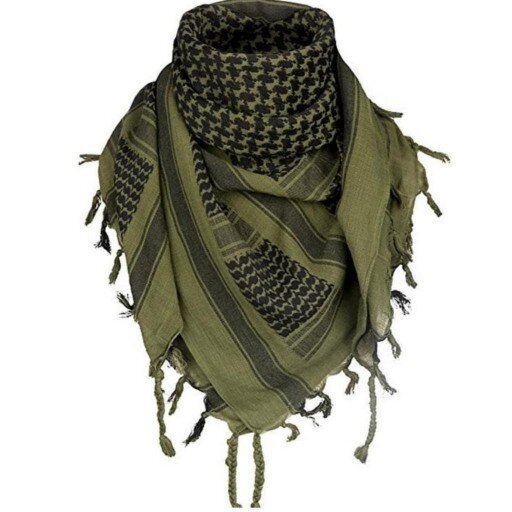
Chaffee’s fashion wear moved away from traditional colors and fabrics, and mass-produced versions hit the market in the early 2000s. In 2017, the healer was shown at the Museum of Modern Art in New York as part of a fashion show. One of the senior curators at the time said of the presence of Shafism in the Museum of Modern Art in New York:[چفیه] It is filled with deep political significance. Sometimes a costume piece is completely disconnected from its original context and used solely for its aesthetic merits.
However, the adoption of Shafia in the mainstream of fashion and clothing did not bring much benefit to Palestinian manufacturers, as while the local workshops producing Shafia were closed one after another, its production in China and other countries that pioneered this field continued to grow. Take up clothing production. The Chinese chafia was cheaper than the traditional Palestinian workshop shafia and reached the market via a direct route, which made it difficult for the old workshops to continue producing the chafia.
While cheap Chinese tea brought down chaff-producing Palestinian families, brands like Chanel and Fendi launched chaffis that sometimes cost up to three thousand dollars.
However, the mass production of the Shafiya and its confiscation by the commercial giants of the fashion world did not deprive the Shafiya of its resistance, particularly its “Palestinian” meaning. Shadia Mansour, a British-Palestinian rapper, insists that the symbolic bond of Palestinian identity must be recognized and remembered, and has referred to it as often as possible in her work. In 2010, she released her first single, Al Keffiyeh 3, Al Arabiya means Arabic, as a symbol of her dress and identity.
Palestinian artist Mohammed Assaf became famous in 2013 with a song in praise of Jameh, “Ali Al-Shafih” or “Kafiya”, and his song became the Palestinian anthem and soon won the Arab Idol talent show. Recently, in Taj al-Ras, or Palestine, the crown on the head, the Palestinian singer Mohanand Khalaf, Shafia dancers perform the traditional dance of Dabkeh.
Big brands in the UK, China and the fashion world, the right that seeks to legitimize itself by destroying the Palestinian resistance, and many people who have used or hated Shaivism without knowing its history, none of which has been exposed so far. Implicit resistance is associated with discontent.
end of message /



